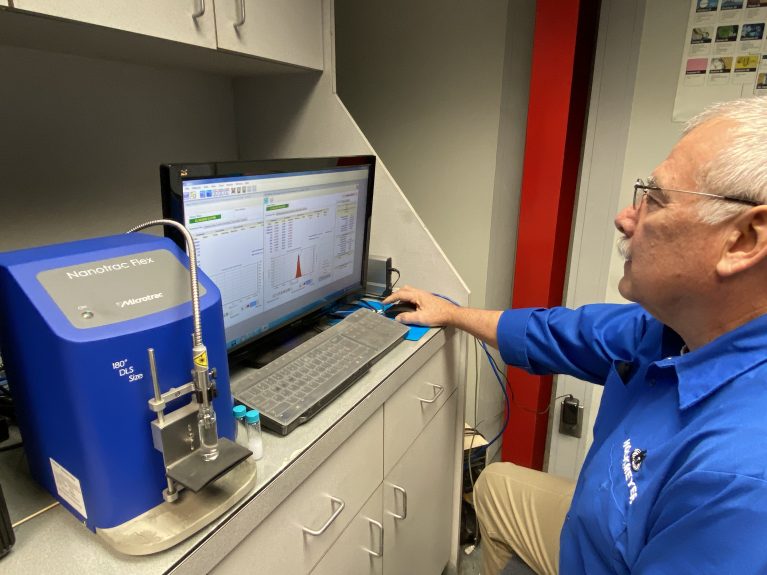
Industry Information
Sweet Success: Improving Your Chocolate Refining Process
Chocolate is one of the most popular confections in the world, and anyone who loves this delicious treat knows how essential the mouthfeel and taste of a piece of chocolate are to your enjoyment. While the quality of the ingredients is undoubtedly important, the chocolate refining process is just as critical to ensuring high-quality taste and mouthfeel.
What is chocolate refining, and how is it different from conching?
Chocolate refining is the second stage of the chocolate grinding process, and it is essential to prevent a grainy texture in the finished product. This crucial step is where the product’s particle size and distribution are optimized in the manufacturing process and serves as the final grinding of all particles in the liquid chocolate together to produce an even extremely smooth texture.
Conching has a similar end goal to refining, and is a traditional element of the chocolate manufacturing process. During conching a surface scraping mixer and agitator evenly distributes cocoa butter within chocolate. This works to “polish” the particles. The name of this step comes from the original shape of the vessels first used in this process, which resembled conch shells. Today, modern machines can perform the conching and refining processes at the same time; however, depending on the manufacturer and length of time available for the refining process, more traditional methods may be preferred.
Why is particle size reduction an essential part of the chocolate refining process?
Particle size is a major factor in the texture of the final chocolate product and is controlled by refining and conching, both of which require a lot of time and energy. Optimizing this process offers the potential for both cost savings and better product quality.
Three key aspects of the conching and refining processes are moisture reduction, texture and flow enhancement, and development of flavor. Residual moisture in chocolate can affect its flow properties—even though a great deal of the raw bean’s water is removed during the initial roast in the early stages of the manufacturing process, trace amounts remain through grinding and refining. Prolonged mixing also helps ensure that all of the tiny solid particles are evenly dispersed in and coated by the cocoa butter, which improves the mouthfeel and workability of the final product.
Extensive consumer research by chocolate manufacturers has determined that once a significant number of particles are above 30µm, the chocolate’s mouthfeel begins to deteriorate and consumers give lower ratings to the chocolate. Conversely, particles that are too small (below 15µm) will adversely impact the final product as well, creating too much surface area for the cocoa butter in the mix and negatively impacting the flow properties of the chocolate with increased viscosity. Because of this, controlling particle size is a critical step in the manufacturing of chocolate because particle size and particle size distribution affect the viscosity, flow, and texture of the product.
How can Hockmeyer solutions make a difference for your business?
Lower production costs and higher product quality are achievable with high-performance particle size reduction equipment. Hockmeyer’s state-of-the art Immersion Mills help achieve target particle size and a well-controlled particle size distribution. They do this efficiently through the use of rapid recirculation milling technology, which pumps the slurry through the media field more frequently and efficiently than other mills, including horizontal or vertical mills. While long residence times may be necessary in many horizontal mills, processing times can be reduced by up to 50% in certain applications by replacing horizontal milling operations with immersion or basket mills.
In particular, the HCPS Immersion Mill with Sweep is a great option for chocolate manufacturers that are looking for a safer, greener, and more efficient way to boost their profits. This mill is truly the world’s most versatile, using a separately driven sweep blade to ensure consistent product feed. This leads to enhanced productivity, reduced labor costs, shortened production times, and increased product recovery. Designed to process viscosities from 900–1.5 million cps and to utilize media from 0.1–2.0 mm, this mill’s patented bidirectional scrapers improve product cooling by scraping the tank’s bottom and side walls and incorporating material back into the batch. The triangular cross-section design is robust and has a wide profile for efficient mixing.
Ready to learn more?
Still unsure which machine will best meet your needs and allow you to improve the particle size reduction process for your products? Contact us for more information about our innovative machines and how they can best serve you and your business’ needs. Our knowledgeable team is ready to assist you as you work to streamline your company’s manufacturing procedures and will help you find the equipment that you need to maximize the chocolate refining process.

